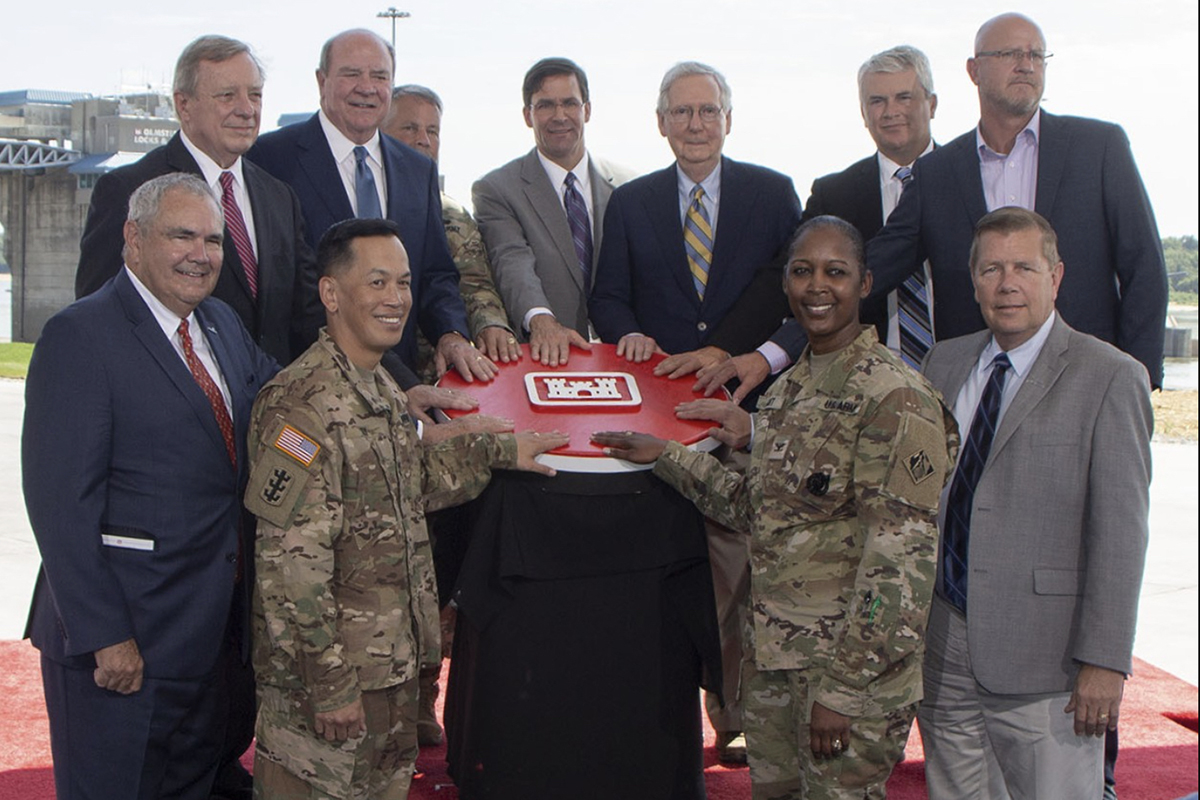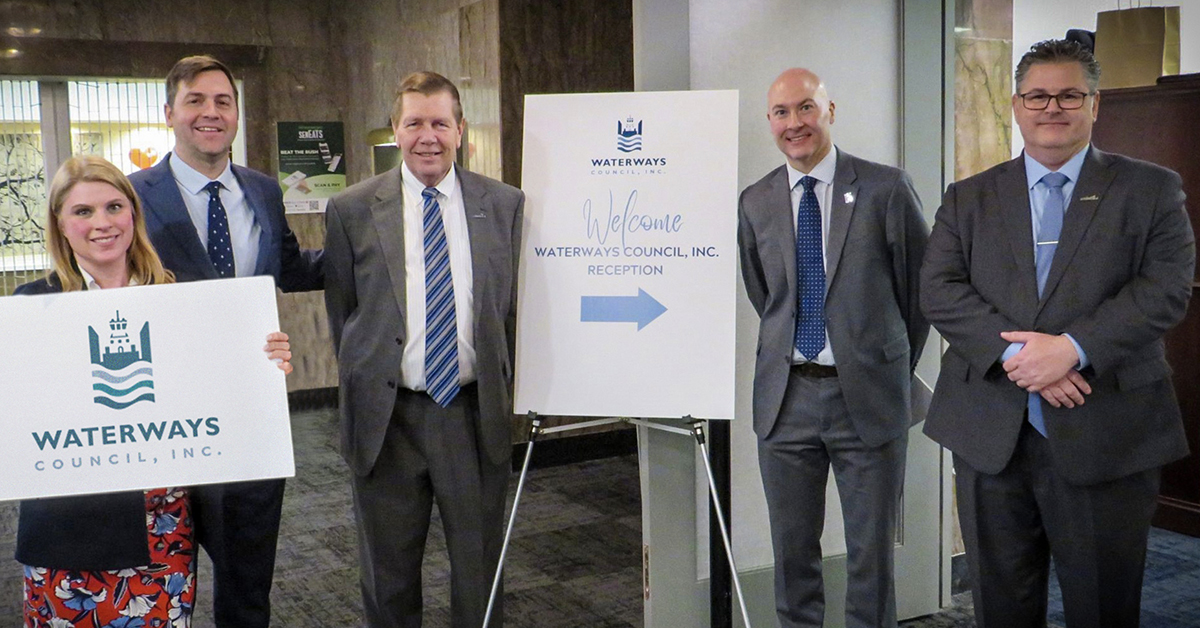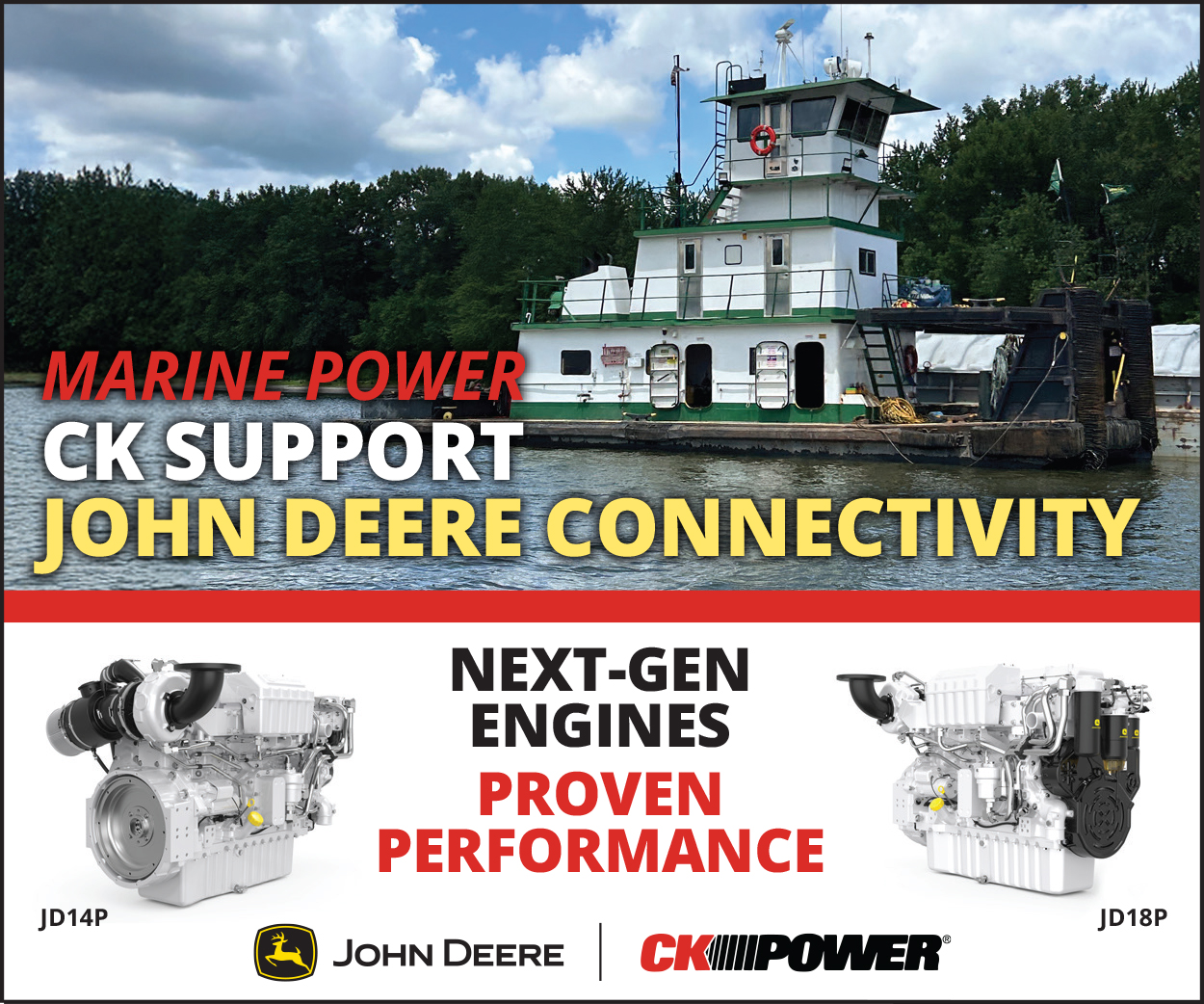Few inland waterways leaders have served as long, as productively or in so many different positions as Marty Hettel.
Starting in the inland waterways industry as a deckhand in1980, Hettel has held positions in multiple areas of practice in barge companies, as well as serving on multiple inland waterway advocacy groups.
He spent 24 years with AEP River Operations in the capacity of logistics, sales and regulatory affairs. When American Commerical Barge Line purchased AEP River Operations in 2015, ACBL hired Hettel to serve as vice president of government affairs.
In that capacity, Hettel became well-known in the industry for his advocacy work on the Inland Waterways Users Board, an important chartered body that is the barge industry’s window and communication channel on how the Corps of Engineers spends funds from the Inland Waterways Trust Fund. Hettel’s always civil but detailed and often pointed questions to Corps representatives have helped the industry understand the opportunities and constraints behind the Corps’ spending decisions.
In an interoffice memo, ACBL paid tribute to Hettel’s lasting influence: “Over the years, Marty has been a driving force in regulatory affairs, using his industry knowledge to influence policies that directly impact river transportation. His transition into government relations positioned him as a key advocate for infrastructure improvements, including his historic tenure as the longest-serving chairman of the Inland Waterways Users Board (IWUB). In this role, he played a crucial part in the dedication of the Olmsted Locks, ensuring that ACBL’s mv. Glenn W. Jones was the first vessel to lock through during the ribbon-cutting ceremony.”

Hettel has also become well-known for his testimony before the Mississippi River Commission (MRC) on the benefits of maintaining a 12-foot navigation channel between Cairo, Ill., and Baton Rouge, La.—something that is already authorized in the Flood Control Act of 1944, although never acted on. Hettel’s advocacy led to the MRC officially recommending further study into this critical infrastructure improvement—a step that could have lasting benefits for the entire industry, particularly in times of extreme low water.
Alex Pucheu, chief administrative fficer and general counsel at ACBL, wrote, “Marty has been a pillar of our company and a driving force in the marine industry for decades. His leadership, dedication and unwavering commitment to our mission have left an indelible mark, not only within our organization but across the entire inland marine sector. Through his active involvement in numerous industry organizations, Marty has helped shape the future of our industry.”
Hettel recently took some time to reflect on the unique, close-up look he has gotten on the changes he has seen on the waterways, and to share his insights into how the nation’s inland waterways infrastructure is funded and maintained.
WJ: Who were some important mentors in your career? What did you learn from them?
MH: Mark Knoy, Jeff Kindl and Keith Darling were all important. My career started as a deckhand in 1980 for Federal Barge Line at Triangle Fleet in Reserve, La. I had graduated from college with an Associate of Arts degree in computer programing. I wanted to move to a warmer climate. Mark Knoy’s dad was port captain at Triangle Fleet at the time and got me the job as a deckhand. In the meantime, I was putting out resumes for jobs in my degree area and had an offer.
I told Delbert that I had this offer but was going to continue working as a deckhand. Delbert told Jeff Kindl, who was managing Triangle at the time, that they were going to lose me, so Jeff told Delbert, “Let’s try him in fleet dispatch.” The rest is history!
The most important item I learned from all three of these gentlemen is to accept change and learn to benefit from change.
WJ: Marty, you’ve held positions in logistics, purchasing, operations, insurance/claims, personnel, shipping and receiving, freight sales and regulatory affairs. How did you come to work in so many different disciplines? Were you asked to go into them, or was it out of a desire to stretch yourself? Did you enjoy them all equally, or did you find some areas more rewarding than others? If so, which ones?
MH: Since I started in dispatch, at Triangle Fleet, my career has taken me on many journeys through the inland waterways. These journeys brought me to MEMCO Barge Line in St. Louis in 1996. Through many different ownerships, I have held several positions. When AEP decided to get into the tank barge business, Keith Darling put me in regulatory affairs in order for us to be ready to operate tank barges. This got me experience in Washington, D.C., working with AEP’s lobbyist. Then, when ACBL purchased AEP River Operations, part of my job was to manage ACBL’s political action committee (PAC).
I never turned down an opportunity to learn about our industry as I was asked to take over these responsibilities. All of these positions were interesting to me, as it was my desire to learn as much as I could about the inland waterways industry.
We are losing a lot of institutional knowledge in our industry, but that creates opportunities for the next generation to step up and learn. I’ve always told people never to turn down an opportunity to gain new skills. That’s how you move forward.
WJ: As a member and leader of the Inland Waterways Users Board since 2012, you have had a close-up look for years at how our locks and dams get funded—or don’t. In what ways has the funding outlook for them changed since 2012?
MH: Honestly, how our locks and dams are funded hasn’t really changed that much, as I cannot remember the last time we had appropriations bills passed before the end of the fiscal year. These short-term Continuing Resolutions (CR) leading to an Omnibus Bill hamper the funding for lock and dam projects. That’s because under a short-term CR, the Office of Management and Budget (OMB) applies its “Least-of Rule” on Inland Waterways Trust Fund (IWTF) Projects. The “Least-of Rule” means OMB takes the “least” amount from among the president’s budget request, House appropriations and Senate appropriations for the Corps of Engineers. When the government doesn’t pass any appropriations, and the president’s budget request does not have any funding for lock and dams, the Corps is handcuffed on funding these projects.
WJ: Inevitably, only a portion of what the IWUB does gets communicated to the wider maritime community and even less to the general public. Can you explain why it is so important?
MH: This is where Waterways Council is so important. WCI does a great job of educating its membership and Congress on the importance of our Inland Waterway System and the necessity of the IWUB and other advisory bodies. (Note to readers: as of this interview, the activities of the IWUB are paused along with those of other federal advisory groups under review by the Trump administration.)
WJ: Can you single out an accomplishment of the IWUB during your long tenure that you are especially proud of, or that is especially important for our industry—either for what it did or what it prevented?
MH: When I was appointed chairman of the IWUB, I realized that the 11 organizations that were approved for a position on the board were approved for two consecutive two-year terms. This meant that after four years, the entire board would turn over. The charter of the IWUB states that the secretary of defense can appoint organizations with a third two-year term to the IWUB.
I worked with the federal leadership of the IWUB to get them to approach the secretary of defense to approve five of 11 organizations this additional two-year term. This would help in the continuity of the IWUB, rather than having a complete turnover of all 11 member organizations. The federal leadership of the IWUB succeeded in getting the secretary of defense to approve an additional two-year term to five organizations, so this is how I ended up as chairman of the IWUB for six consecutive years.
WJ: Given that the function of IWUB is to provide some industry oversight and accountability for the Corps, have relations generally been good between the IWUB and the Corps?
MH: I believe that, overall, the Corps’ communication with the IWUB is good. However, as I mentioned above, the Corps is at times hampered by OMB.
WJ: Marty, you saw the recent Infrastructure Report Card released by the American Society of Civil Engineers that “upgraded” the inland waterways to a C- from a D+. Do you agree with that?
MH: Yes, I do believe our Inland Waterway projects are improving as we have seen the completion of Olmsted, the Lower Monongahela Project and increased operations and maintenance investment on our locks. The increase in O&M allows the Corps to be proactive in performing scheduled lock closures for maintenance, thus reducing the unscheduled closures such as we are experiencing at Wilson Lock today.
WJ: As you approach retirement, does the outlook for waterways infrastructure overall seem more or less hopeful than it did in 2012? What gives you the most hope, and what gives you the most concern in the near future?
MH: The recent change in the federal cost-share on IWTF projects from 50 percent general treasury and 50 percent IWTF to 75 percent general treasury and 25 percent IWTF should get these approved projects funded to completion sooner. With industry contributing around $125 million annually, this creates $500 million in possible annual appropriations. This level of funding would fund a $2 billion project in four years, a big improvement.
Of course the Corps must find ways to build these projects in a more timely manner!
Featured image caption: A group of Waterways Council Inc. and ACBL leaders gather at a WCI event. Pictured are, left to right, Jen Armstrong with WCI; Alex Pucheu, Marty Hettel and Ben White from ACBL; and Capt. Aaron Williams of Bollard Marine Consulting.




